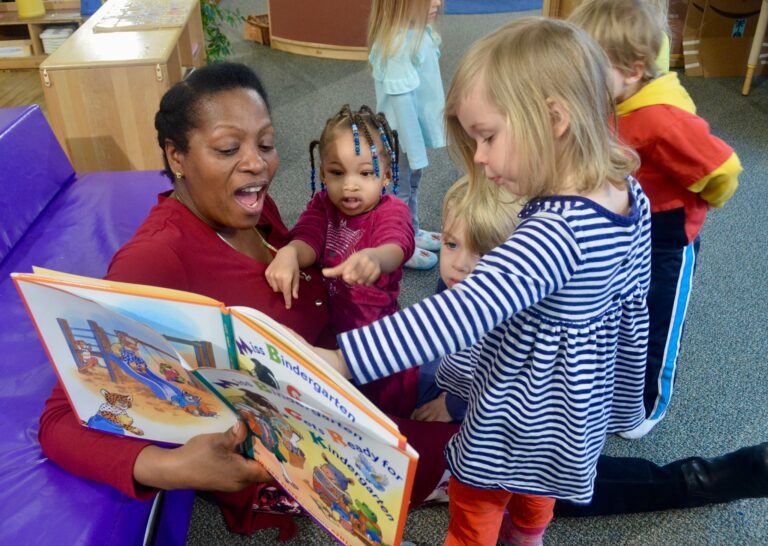Lessons Learned From Research
Based on research conducted by HighScope and other investigators, we can elaborate on the seven components of high-quality early childhood education as follows (Schweinhart, 2004):
- Child development curriculum – Of all the ingredients in a high-quality program, an educational model that recognizes the value of child-initiated active learning is the most important. Research that has tested child development theory, and verified it in practice, identifies these principles:
- “Child-initiated learning activity acknowledges both the developmental limits of young children and their potential for learning” (Schweinhart, 2004, p. 18). In a balanced approach, young children are neither pushed to do things more suitable for older children nor seen as uninterested in or incapable of engaging with meaningful content.
- “The best early childhood learning activities are child-initiated, developmentally appropriate, and open-ended’ (p. 19). This means activities build on children’s natural curiosity, are matched to children’s current and emerging abilities, and allow for exploration and variation rather than having to be performed a single “right way.”
- “Open communication between teacher and child and among children broadens children’s perspectives as they learn to share ideas” (p. 19). Research on teaching and childrearing shows the benefits of shared control over either authoritarian or permissive extremes. A democratic style allows children to see things from different perspectives, which is an important social as well as cognitive skill.
- Low enrollment limits – Studies have found that the fewer children per adult, the better the adult-child interaction. In addition to favorable staff-child ratios, the total group size should be limited based on standards recommended by the National Association for the Education of Young Children for the ages of the children served (Copple & Bredekamp, 2009).
- Staff trained in early childhood development – Adults who provide care and education for young children need specialized training in child development and early childhood education. Research also shows that the higher the level of teachers’ formal education, the more developmentally appropriate their teaching practices (National Research Council, 2001). Current efforts within the field to raise teachers’ educational levels and credentials stem from these research findings.
- Supervisory support and in-service training – In addition to hiring well-qualified staff, program administrators determine their ongoing in-service training. Training should occur at least once a month and help teachers implement the program’s child development curriculum.
- Involvement of families as partners – Family involvement is essential to good education throughout their children’s school years. Although there may be obstacles to such involvement (e.g., working-parent schedules and multiple demands on the family), high-quality programs are creative in overcoming these barriers. They offer many options for inviting family participation.
- Sensitivity to the noneducational needs of children and their families – Today’s families cope with many demands and stresses. In addition to being concerned about the education of their children, many parents also contend with financial, medical, social, or legal issues. Early childhood programs cannot meet all these needs directly. However, as part of a community network, high-quality programs are aware of the services available and help families obtain the assistance they need. The smoother the family’s functioning, the better the child’s adjustment.
- Developmentally appropriate evaluation procedures – The main objectives of evaluation are to assess program quality and children’s development. Administrators use program evaluation to make decisions about agency policies and staff development. Teachers use child evaluation to plan appropriate educational activities for individual children and the class as a whole. For evaluation results to be accurate and useful, they should be based on objective and observable behavior. Moreover, they should examine the elements of curriculum implementation and child development that are consistent with the program’s philosophy and goals.
When researching an early childhood program for your child, refer to this list of high-quality program elements and ask yourself, “Does this program have all seven elements of a high-quality program?”
Adapted from “The Essentials of Active Learning in Preschool” (Epstein, 2014)
